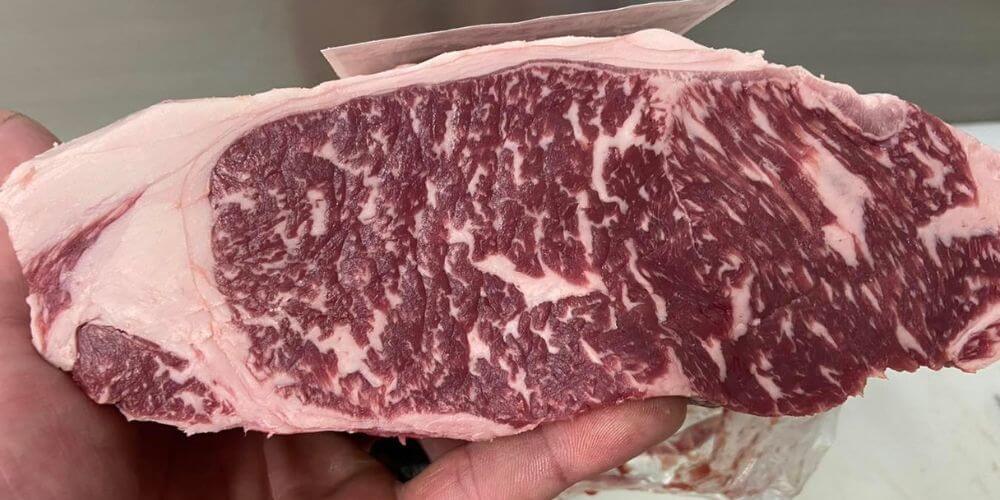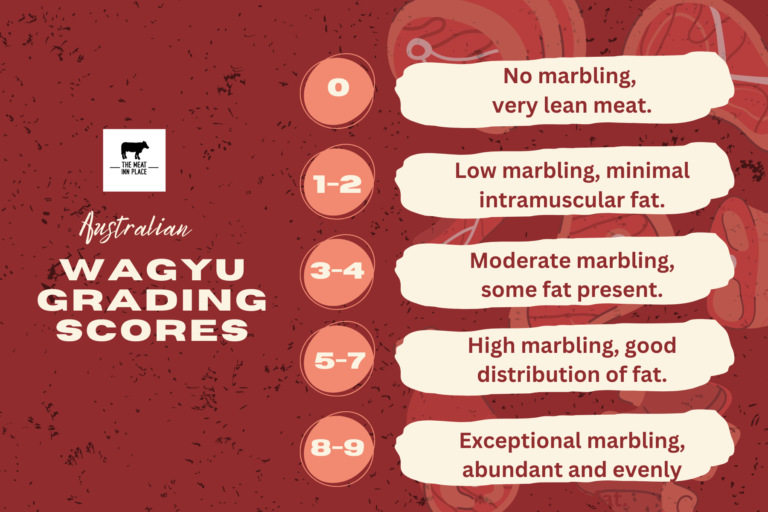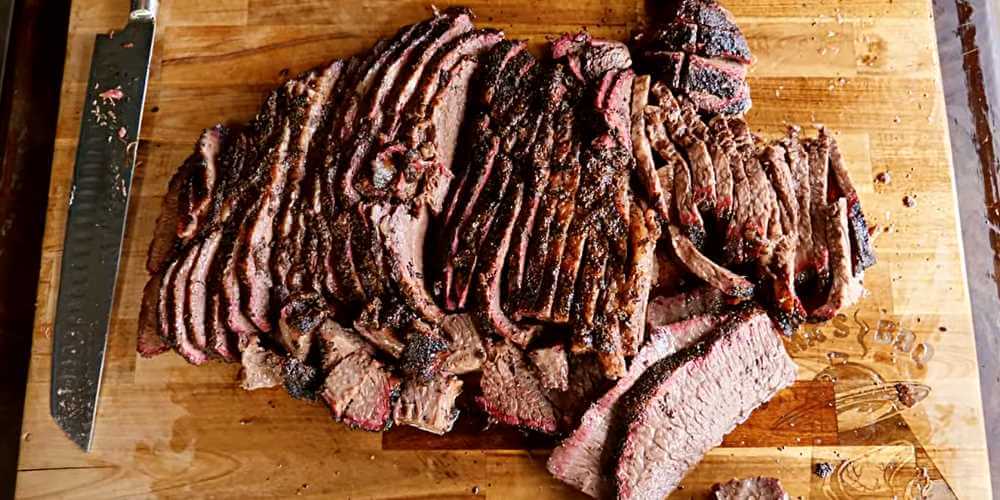
John Andrew
John Andrew, owner of The Meat Inn Place in Lilydale, boasts a legacy of butchery, offering exclusive grass-fed and free-range meats, and specialising in low-and-slow cuts. With a career inspired by his father, John’s passion and expertise have nurtured a reputable business distinguished by unique offerings like Kiwami Wagyu, driven by a commitment to quality and community service.
Australian Wagyu Meat Grades As Explained By Butchers
Reading Time: 8 minutes and 15 seconds

As a butcher at The Meat Inn Place in Melbourne for many years, I’ve had the pleasure of working with some of the finest meats around. I still vividly remember my first taste of Wagyu beef—like nothing I’d ever experienced. The marbling, the texture, the flavour—it all just melted in my mouth. That moment sparked a passion in me to learn everything about Wagyu. In this blog, I’m excited to share my knowledge on Australian Wagyu meat grades, helping you understand what makes this beef so special and how to choose the best cuts for your needs.
Understanding Australian Wagyu Beef
Defining Wagyu
Wagyu, translating to “Japanese cattle” (和牛), is a premium beef breed from Japan known for its exceptional marbling. My first taste of Wagyu, handed to me by a fellow butcher at The Meat Inn Place in Melbourne, was unforgettable due to its buttery texture and rich flavour. Wagyu includes several Japanese cattle breeds, with Kobe beef being the most famous. The distinctive marbling of Wagyu gives it a melt-in-your-mouth quality that sets it apart from other beef.
The origins of Wagyu trace back to ancient Japan, where farmers meticulously bred cattle for marbling, tenderness, and flavour. These cattle were often raised in stress-free environments, receiving massages and listening to soothing music to enhance meat quality. This dedication to quality and tradition is what makes Wagyu a delicacy.
Wagyu Comes to Australia
Back in the 1980s, Australian farmers decided to bring Wagyu cattle Down Under to boost our beef industry. They crossbred Wagyu with local breeds like Angus and Hereford, creating a unique blend that thrived in our vast grazing lands and diverse climate. Unlike its Japanese counterpart, Australian Wagyu is grain-finished, giving it a distinct flavour profile. The marbling is impressive, often rivaling that of Japanese Wagyu, and it combines tenderness with a slightly leaner texture, making it perfect for various dishes.
My first experience with Australian Wagyu was during a family barbecue in the Yarra Valley. A friend had brought along some beautifully marbled Wagyu steaks. As we grilled the meat over the open flame, the aroma was intoxicating. The first bite was a revelation—the steak was incredibly tender, with a rich, beefy flavour that had a hint of sweetness from the grain finishing. This moment made me appreciate the importance of understanding Wagyu meat grades to truly value the quality of this remarkable beef. Whether you enjoy it in Tokyo or Sydney, Wagyu’s exquisite taste is a global delight.
Comparing Wagyu Grading Systems

Let’s explore the captivating world of Wagyu beef grading systems, focusing on the global and Australian perspectives. As a butcher, mastering these systems is key to offering the finest meat to my customers.
Japanese Wagyu Grading System
In Japan, Wagyu grading is an art. The Japanese Beef Marbling Score (BMS) ranges from 1 (minimal marbling) to 12 (abundant marbling), with the highest grade being A5. A5 Wagyu is like edible art—richly marbled and melt-in-your-mouth tender. I remember the first time I handled an A5 Wagyu—it felt like slicing through butter, and the flavour was out of this world.
Australian Wagyu Grading System
Australia has developed its own robust grading methods, including the AUS-MEAT System, which scores marbling from 0 to 9. There’s also the Meat Standards Australia (MSA), which evaluates overall beef quality. Working with these systems at the butcher shop has been both rewarding and challenging.
Educating customers about these grading systems helps them appreciate the quality and craftsmanship behind each cut of beef. However, navigating different grading criteria and maintaining consistency can be challenging. Managing inventory based on varying grades also requires careful planning. But seeing the excitement in customers’ eyes when they learn about the differences between a Japanese A5 and an Australian Wagyu striploin is incredibly rewarding.
Why Marbling Matters in Wagyu
Marbling, the delicate fat interwoven with muscle fibres, turns Wagyu beef into a culinary wonder. Acting as the maestro, marbling melts into the meat and releases a rich, buttery flavour that’s unforgettable. It’s not just about taste; marbling also creates a velvety, melt-in-your-mouth texture. The fat renders perfectly during cooking, making each bite a luscious experience.
In my shop, I once guided a group of chefs through a Wagyu showdown. They compared two ribeyes—one with a BMS of 5, the other with a 9+. Chef A found the BMS 5 ribeye tasty but lacking that magical tenderness. Chef B’s BMS 9+ ribeye, with its starry marbling, was a revelation. The aroma, the sizzle, the first bite—it was pure bliss. Chef B said it best: “This is celestial. It’s like tasting stardust.”
Australian Wagyu Grading Scores Explained

The AUS-MEAT grading system for Australian Wagyu beef assigns scores from 0 to 9+, providing a clear indication of marbling quality. Here’s a detailed guide:
- 0: No marbling. Lean meat with no visible fat is suitable for lean beef enthusiasts.
- 1-2: Low marbling. Minimal fat, offering a slight improvement in flavour and tenderness.
- 3-4: Moderate marbling. Some fat is present, delivering a balanced taste and juiciness.
- 5-7: High marbling. Well-distributed fat, ensuring a juicy, flavourful bite.
- 8-9: Exceptional marbling. Abundant, evenly spread fat, resulting in a buttery texture and rich flavour.
When selecting Wagyu, look for visible marbling, which guarantees tenderness and a rich, buttery flavour.
Once, Mary, one of our frequent customers, stood confused in front of our Wagyu display. She asked, “What’s the difference between a 5 and a 9?”
I explained, “A grade 5 has moderate marbling—juicy and delicious. But a 9 is exceptional, with buttery, tender slices that melt in your mouth.” Her eyes widened in excitement as she chose a beautifully marbled ribeye. Understanding Wagyu grades helps you make the best choices and savour the finest meat.
How the Australian Scale Surpasses the Japanese BMS Scale
The Australian Wagyu grading system uses a scale from 0 to 9+, while the Japanese BMS scale ranges from 1 to 12. This difference means the Australian system offers a more precise and consistent range within the critical marbling spectrum. In my experience at the butcher shop, customers often find the Australian scale easier to understand and compare, allowing them to make informed decisions about the quality of their meat.
| Aspect | Australian Scale | Japanese BMS Scale | Advantages |
| Precision and Consistency | Scores from 0 to 9+ | Scores from 1 to 12 | More precise and consistent range within the critical marbling spectrum |
| Practicality for Chefs | Grades 5-6 (buttery texture) | Easier selection for roasting and grilling | |
| Grades 7-8 (thick, juicy) | Ideal for various culinary creations | ||
| Culinary Excellence | Less than 1% achieve 9+ score | Exceptional marbling, resulting in savoury, luxurious flavour and optimal moisture retention during cooking |
For the reasons stated above, Michelin-starred restaurants often feature Australian Wagyu, and even casual spots use 9+ grade Wagyu for their gourmet burgers. And because Australia is the largest producer of Wagyu in the world, it doesn’t come as a surprise how even regular households buy Wagyu for their meals at home! The Australian system isn’t just about numbers; it’s about making every bite a delicious experience.

What Makes Australian Wagyu Special?
Australian Wagyu beef is a culinary gem, blending tradition, innovation, and meticulous care. It represents the perfect harmony between ancient Japanese practices and Australia’s modern farming techniques. Here’s what makes it so special:
- Marbling: The intense marbling in Australian Wagyu creates a rich, buttery texture as the fat melts during cooking. This delicate web of fat within the meat ensures an unparalleled dining experience. I vividly remember my first taste—it was pure bliss, like no other beef I’ve tried.
- Breeding Practices: Wagyu cattle start on lush pastures before transitioning to grain, achieving their renowned marbling. The BREEDPLAN genetic system ensures top-notch genetics. Visiting these farms, I’ve seen farmers move through paddocks at dawn, greeting each Wagyu with reverence. In the breeding sheds, the magic unfolds. The BREEDPLAN system guides them—the genetic compass. They pair sires and dams like artists mixing colours on a canvas.
- Perfect Environment: Australia’s vast, pristine landscapes offer plenty of space for Wagyu cattle, and sustainable practices ensure ethical production. Walking these farms, I’ve seen the careful balance between nature and farming.
My Final Thoughts on Australian Wagyu
As we come to the end of our deep dive into Australian Wagyu beef, I hope you feel as excited about this amazing meat as I do. We’ve journeyed from the ancient traditions of Wagyu in Japan to the innovative practices here in Australia, exploring the intricate grading systems and the vital role of marbling along the way.
Having worked with Wagyu for years, I’ve seen how understanding these details can transform your experience. Whether it’s a family barbecue or a gourmet meal, choosing the right grade of Wagyu can elevate your dish to new heights. Australian Wagyu, with its perfect balance of marbling and flavour, is a testament to the craftsmanship and dedication of our local farmers. So next time you’re in the market for something special, give Australian Wagyu a try—you won’t be disappointed!
FAQ
Australian Wagyu is on par with Japanese Wagyu, with the choice ultimately depending on personal taste. Japanese Wagyu is renowned for its exceptional tenderness and rich, buttery flavour due to its intense marbling and specialised care. It offers a luxurious, melt-in-your-mouth experience.
Australian Wagyu, while genetically similar, is raised in different conditions, producing beef that is leaner but still highly marbled and flavourful. It offers a milder taste and tender texture, making it excellent for grilling. The unique Australian environment adds distinct qualities to its beef.
For premium cuts of Australian and Japanese Wagyu, visit us at The Meat Inn Place and elevate your dining experience.
Angus beef comes from the Aberdeen Angus breed, originally from Scotland. These cattle are typically grass-fed and later grain-finished. Known for its rich flavour, Angus beef has high levels of marbling. When selecting Angus, look for Prime or Choice USDA grades for the best quality.
Wagyu beef, originating from Japan, is famous for its intense marbling and buttery texture. The unique fat content of Wagyu enhances its flavour and tenderness, making it the pinnacle of beef quality. Raising Wagyu involves special care, leading to higher costs and prices.
In essence, Angus offers robust flavour, while Wagyu provides unparalleled marbling and luxury. For premium cuts of both, visit The Meat Inn Place and elevate your dining experience.
In Australia, the most expensive Wagyu ever sold is a 13-month-old Wagyu heifer named Sunnyside S0014. This exceptional animal achieved a record-breaking price of $400,000 at the Elite Wagyu Sale in Melbourne. Bred in Inverell, New South Wales, Sunnyside S0014 surpassed the previous record held by a Brahman bull, NCC Justified, which sold for $325,000 in Queensland in 2017.
The sale of Sunnyside S0014 drew intense interest from buyers around the globe, ultimately being purchased by Yulong Invest. This heifer is set to become a cornerstone of Yulong’s Wagyu herd, ensuring her elite genetics are carried forward for generations.
For premium Wagyu beef, explore our selection at The Meat Inn Place. Discover the finest cuts that bring unparalleled quality to your table. Visit us today!

